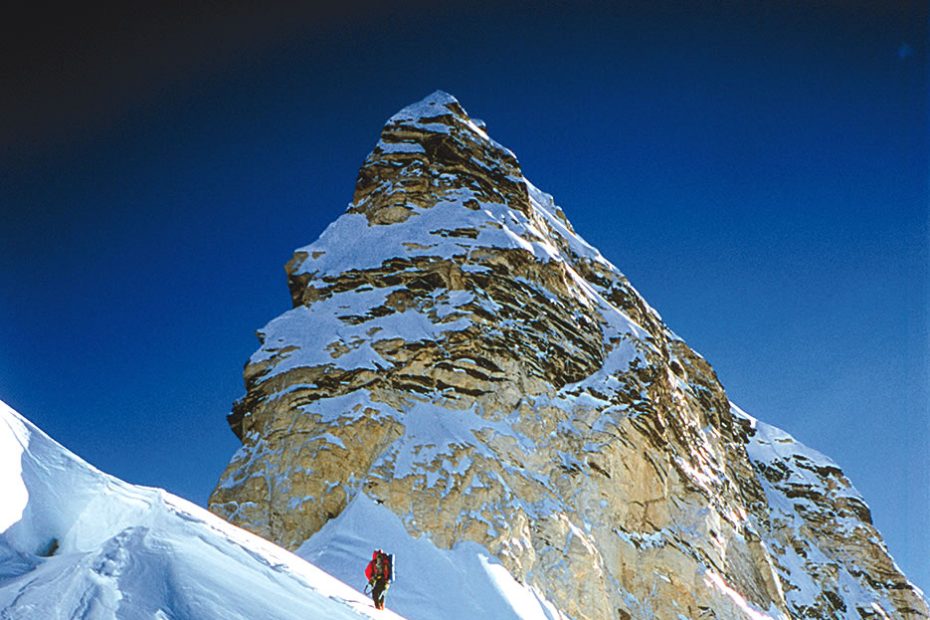Wired: Rethinking Mountain Gloom
Dawn L. Hollis challenges the belief in academia that people did not care for mountains until they began climbing them at the end of the eighteenth century. Further, she studies why an institution such as the British Alpine Club would react so strongly against the premise that the love people have for mountains is nothing new.
![Christ Healing the Blind, painted ca. 1657. Dawn L. Hollis observes: The image depicts the healing of two blind men recounted in Matthew 20:29-34. Their first sight will be of the mountainous vista that dominates the canvas. [Image] Philippe de Champaigne](https://dev.alpinist.com/wp-content/uploads/2023/09/alp57-wired-1-930x620.jpg)
![A Berec headlamp used by Martin Mushkin from the mid-1950s until 1980. [Photo] Michelle Hoffman](https://dev.alpinist.com/wp-content/uploads/2023/09/alp57-tool-users-1-930x620.jpg)
![A climber's bookcase. [Photo] Derek Franz](https://dev.alpinist.com/wp-content/uploads/2023/09/literature-of-ascent-1-930x620.jpg)
![[Illustration] Andreas Schmidt](https://dev.alpinist.com/wp-content/uploads/2023/09/deringolade-alp56-full-vallue-1-930x620.jpg)
![Lungaretse (5870m). [Photo] Camilo Lopez](https://dev.alpinist.com/wp-content/uploads/2023/09/unattached-alp57-on-belay-1-930x620.jpg)
![[Image] Richard T. Walker. the fallibility of intent #1, 2015; cut-out archival pigment print; 32 x 48 in. Walker's work teeters between the humorous and melancholic, juxtaposing the sublime with what it means to be imperfect and ultimately human, wrote Amy Owen in a California Gatehouse Gallery brochure. Courtesy, Richard T. Walker](https://dev.alpinist.com/wp-content/uploads/2023/09/beyond-conquest-alp57-off-belay-930x620.jpg)
![Loulou Boulaz. In the 1930s, Boulaz was “the only woman in the race for the big north faces,” historian Rainer Rettner writes. “She was met with a lot of distrust by men.” [Photo] Sallie Greenwood](https://dev.alpinist.com/wp-content/uploads/2023/09/local-hero-loulou-boulaz-1-930x620.jpg)
![The north face of Kumbhakarna, above local settlements. Some names of local expedition workers are absent from written records. For a few in this article--Penuri, Ungati and Tumba--where we couldn't find other sources, we relied on climbers' memories, and it's possible the real names might be different. [Photo] Javier Camacho Gimeno](https://dev.alpinist.com/wp-content/uploads/2023/09/ghunsa-1-930x620.jpg)

![A photo of Manhattan from the author. On the connection between the landscapes of the wild and Manhattan, Brown writes, I remember the poet John Haines looking at me like I was crazy when I told him I was leaving Homer to move to a big urban jungle. He shuddered and said, 'I don't know how you can do that.' But what Alaska and Manhattan had in common was, again, a kind of intensity. And the same river running through them both. [Photo] Chip Brown](https://dev.alpinist.com/wp-content/uploads/2023/09/chip-brown-city-1-930x620.jpg)